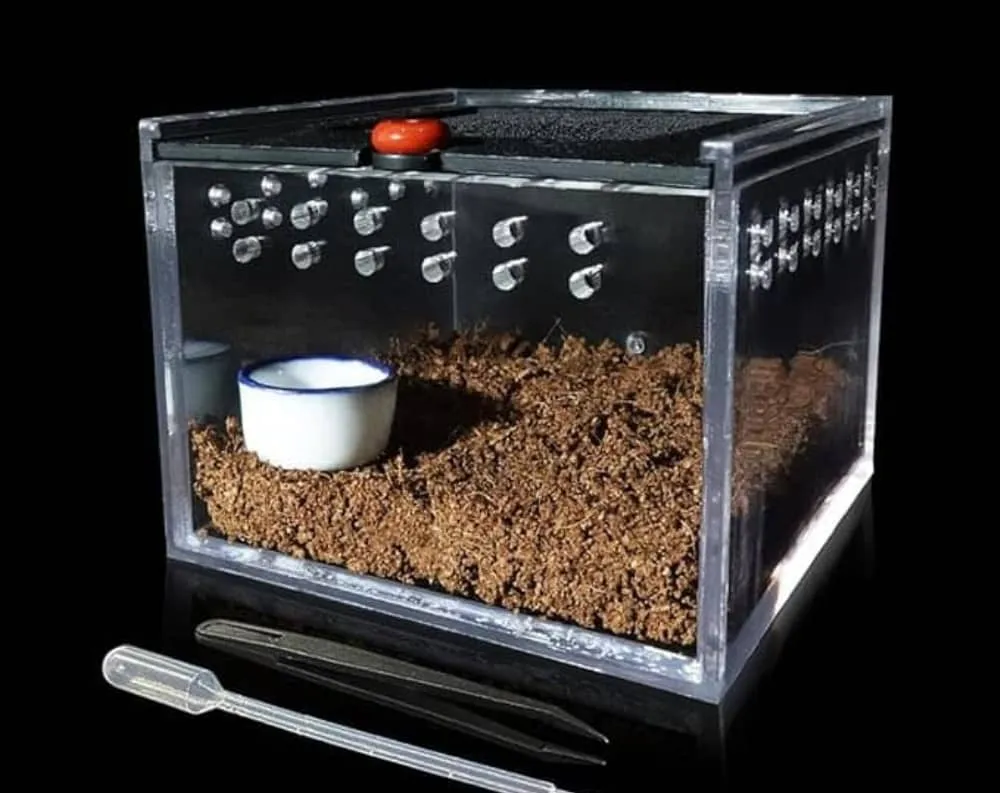Choosing the Best Tarantula Enclosure
Setting up the perfect tarantula enclosure is crucial for the health and well-being of your eight-legged friend. A well-designed habitat mimics the tarantula’s natural environment, providing a safe and comfortable space for them to thrive. This guide will walk you through every aspect of creating the ideal tarantula enclosure, from selecting the right size and features to maintaining optimal conditions. Understanding the specific needs of your tarantula species is paramount to creating the best possible environment for them. A poorly designed enclosure can lead to stress, health problems, and even premature death for your pet. By following these guidelines, you can ensure your tarantula lives a long, healthy, and fulfilling life.
Size Matters Choosing the Right Enclosure
The size of your tarantula enclosure is one of the most critical factors to consider. An enclosure that is too small will restrict your tarantula’s movement and can lead to stress, while an enclosure that is too large can make it difficult for the tarantula to find food and feel secure. Generally, the enclosure should be at least twice the tarantula’s leg span in width and length, and tall enough to allow for the substrate depth and any decorations. Consider the species of tarantula, as arboreal species require taller enclosures, while terrestrial species thrive in wider, ground-level setups. Always err on the side of slightly larger rather than smaller, as this gives the tarantula room to grow and explore its environment. It is also essential to consider the tarantula’s growth stages. A juvenile tarantula will need a smaller enclosure than a fully grown adult.
Understanding Tarantula Species Needs
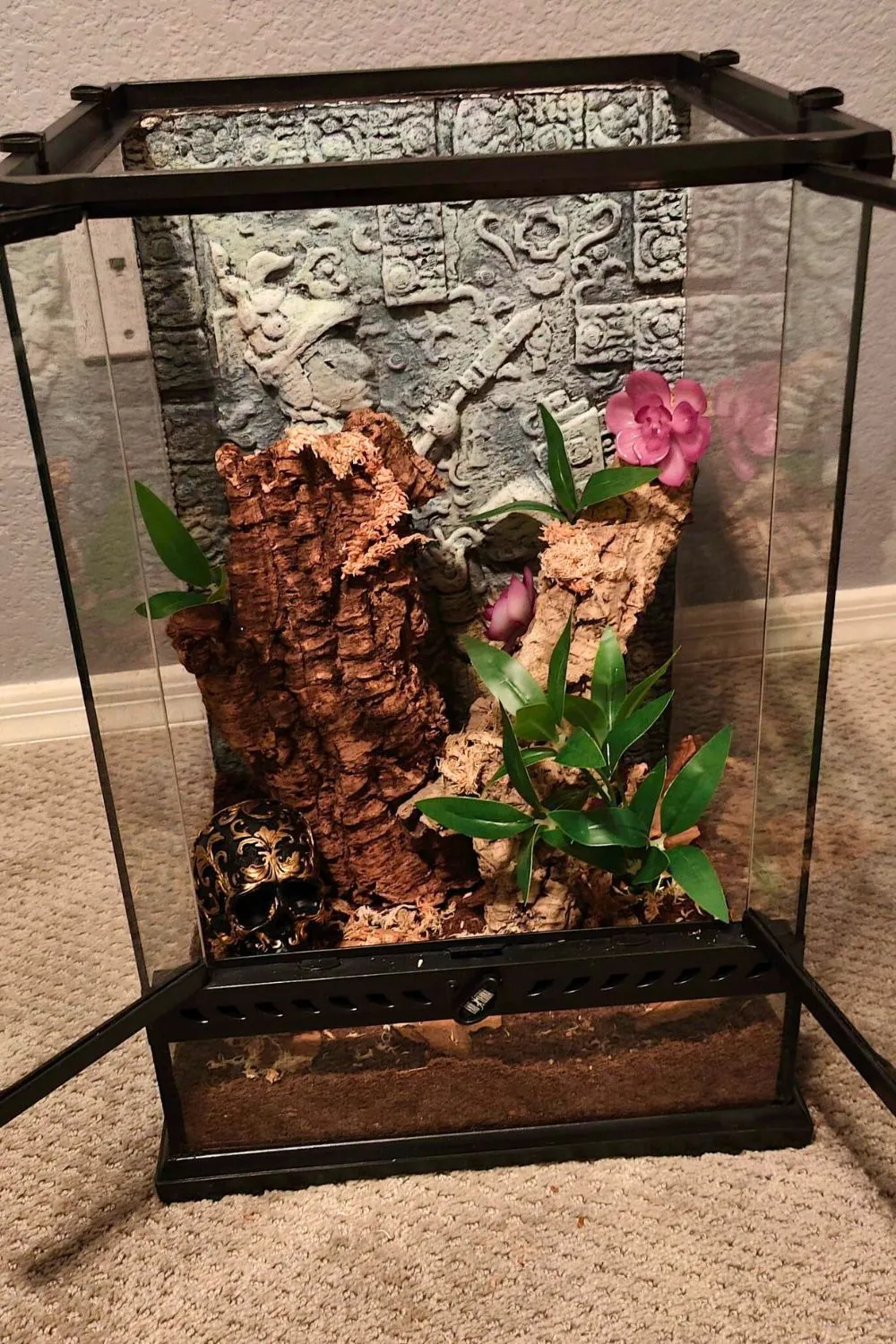
Different tarantula species have different needs when it comes to their enclosures. Before setting up your enclosure, research the specific requirements of your tarantula species. This includes their preferred substrate, humidity levels, temperature, and hiding places. Ignoring these specific needs can lead to a stressed or unhealthy tarantula. Some species are more sensitive than others, and some thrive in drier or more humid environments. By understanding these requirements, you can create a habitat that closely matches your tarantula’s natural environment and ensures its well-being. Always prioritize the species-specific needs above general guidelines.
Terrestrial Tarantulas
Terrestrial tarantulas, as the name suggests, live on the ground. Their enclosures should be wider than they are tall, providing ample floor space for movement and burrowing. Substrate depth is critical for terrestrial species, allowing them to create burrows for shelter. Good examples of terrestrial tarantulas include the Mexican Red Knee and the Chaco Golden Knee. They typically prefer a substrate mix that holds moisture well while allowing for drainage. Make sure to provide a water dish and a hide for these tarantulas.
Arboreal Tarantulas
Arboreal tarantulas, on the other hand, are tree-dwelling spiders. Their enclosures should be taller than they are wide, providing vertical space for climbing and webbing. Arboreal species like the Pinktoe Tarantula need vertical structures such as branches or cork bark to climb on and create webs. Ensure the enclosure is secure to prevent escapes, as these tarantulas are adept climbers. Higher humidity levels are often required for arboreal species, so regular misting may be necessary.
Semi-Arboreal Tarantulas
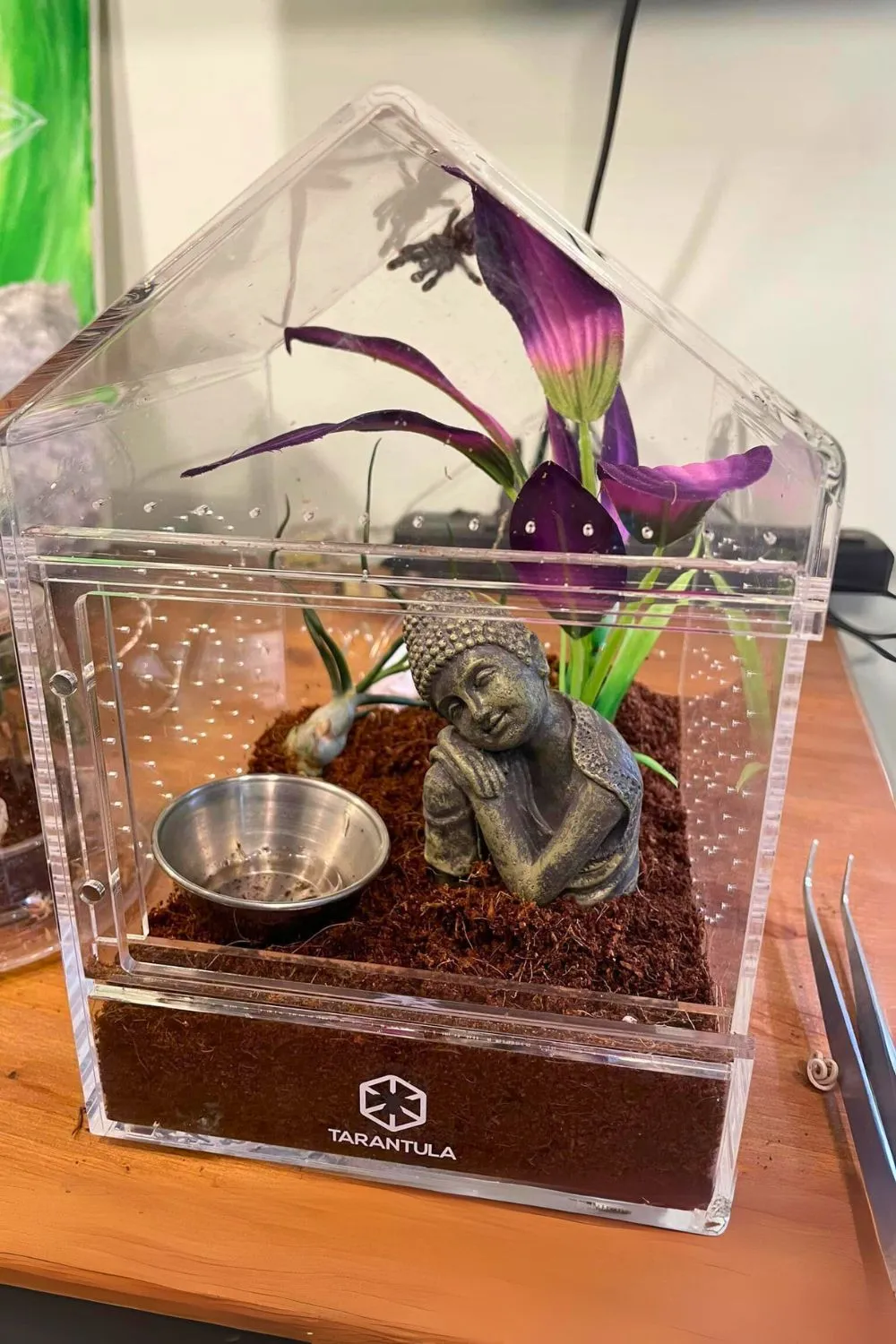
Semi-arboreal tarantulas occupy a middle ground, often spending time both on the ground and in elevated areas. Their enclosures should provide a balance of both horizontal and vertical space. These species may require a combination of substrate for burrowing and vertical structures for climbing and webbing. Make sure that there are options for both terrestrial and arboreal activities. Good examples of these types of tarantulas are the Cobalt Blue Tarantula. Provide appropriate moisture levels as well.
Essential Enclosure Features
Beyond size, several essential features contribute to a thriving tarantula enclosure. These include the right substrate, a reliable water source, appropriate hiding places, and adequate ventilation. Each element plays a vital role in maintaining a healthy environment and replicating the tarantula’s natural habitat. Failure to provide these features can lead to stress, dehydration, and other health issues. Paying close attention to these essential features will ensure that your tarantula is comfortable and well-cared for.
Substrate Selection
The substrate is the foundation of your tarantula’s enclosure, providing a surface for them to walk on, burrow in, and build their habitats. The right substrate also helps to maintain humidity levels and can aid in waste management. The type of substrate you choose will depend on the species of tarantula you have. It is essential to select a substrate that is safe, non-toxic, and able to hold moisture without becoming overly saturated.
Types of Substrate
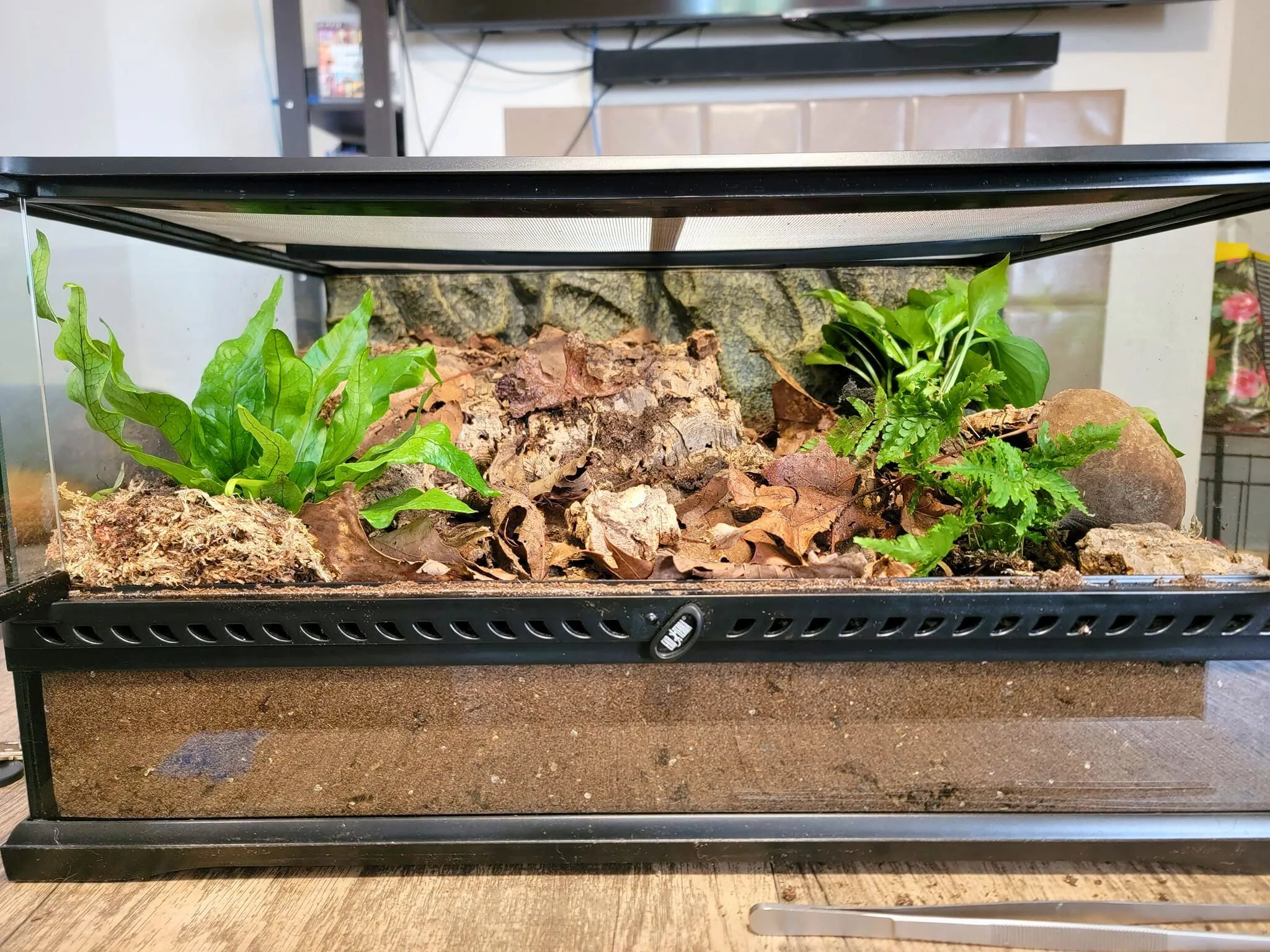
Several substrate options are suitable for tarantulas. Coconut fiber (coco coir) is a popular choice due to its excellent moisture-retaining properties and natural appearance. Sphagnum moss can be used to help maintain humidity and provide a hiding place. Peat moss is another option, but it can be acidic, so ensure it is mixed with other substrates. Avoid substrates like sand, gravel, or wood shavings, which can be harmful to tarantulas. The chosen substrate should be clean and free of pesticides or other chemicals. Always mix substrates to get the desired results.
Substrate Depth
The depth of the substrate is also important, especially for burrowing species. Terrestrial tarantulas need a substrate depth that allows them to create secure burrows. The general rule of thumb is to provide a substrate depth equal to at least the tarantula’s leg span, but some species may require more. For arboreal species, a shallower layer may be sufficient, but it should still allow them to anchor their webbing and maintain humidity. Make sure the substrate is compacted enough for the tarantula to burrow in without the burrows collapsing. Too little substrate can stress the spider, while too much can make maintenance difficult.
Water and Humidity
Providing a clean water source and maintaining appropriate humidity levels are crucial for your tarantula’s health. Tarantulas absorb water through their food and by drinking from a water source. Dehydration can be fatal, so ensuring a constant supply of fresh water is essential. Humidity levels vary depending on the species, so research your tarantula’s specific needs. Too much humidity can lead to mold growth and other issues, while too little can cause dehydration and molting problems.
Water Dish and Misting
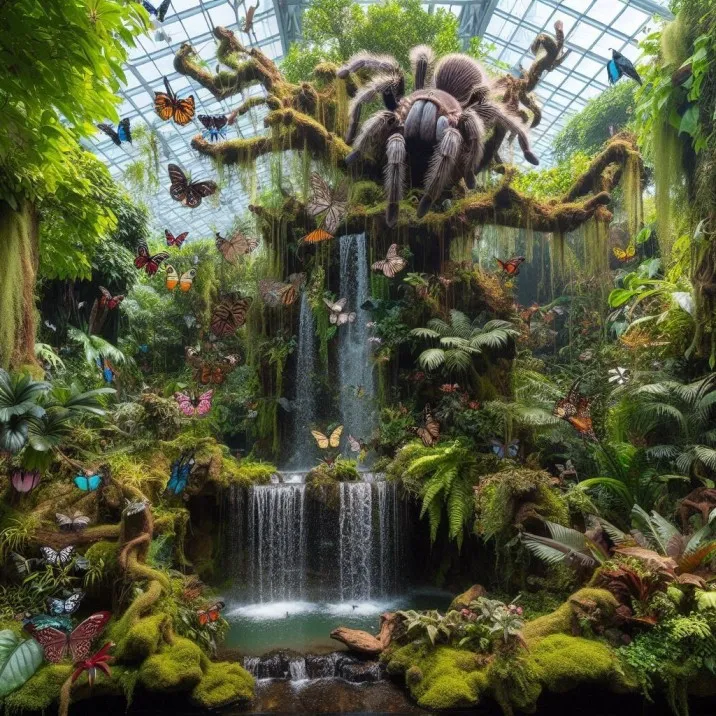
A shallow water dish is essential for providing your tarantula with access to fresh water. The dish should be small enough that the tarantula can easily reach the water but not so large that it poses a drowning hazard. Use a water dish that is easy to clean and replace regularly. Misting the enclosure with a spray bottle can also help to maintain humidity levels, especially for arboreal species. Mist one side of the enclosure, rather than directly spraying the tarantula. Make sure to use dechlorinated water.
Maintaining Humidity Levels
To maintain the correct humidity levels, you can use a hygrometer to monitor the enclosure’s humidity. The frequency of misting and the type of substrate you use will affect the humidity. For species that require high humidity, you may need to mist the enclosure daily. Ensure that there is good ventilation to prevent mold and mildew. The substrate should be slightly moist, not saturated. Regularly check your tarantula’s enclosure and adjust the humidity levels as needed to ensure your pet’s well-being.
Hiding and Decor
Tarantulas are naturally shy creatures, and providing them with hiding places is essential for their psychological well-being. Hiding places reduce stress and provide a sense of security. Decorations can also enhance the aesthetic appeal of the enclosure, but their primary purpose should be to benefit the tarantula. Choose decorations carefully, ensuring they are safe, non-toxic, and appropriate for the species.
Creating a Natural Habitat
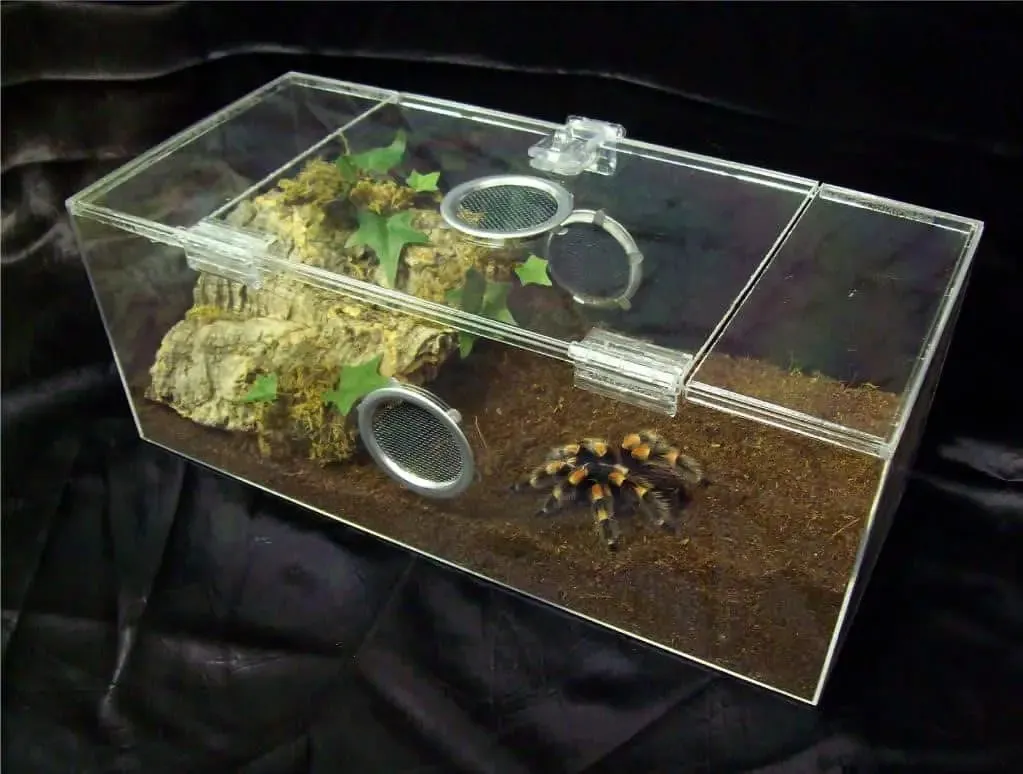
Strive to replicate the tarantula’s natural environment. This can be achieved by including elements like cork bark, artificial plants, and other naturalistic features. Arrange the decorations to create a visually appealing and functional habitat. Remember, the goal is to provide the tarantula with a space that feels safe and secure. Consider the tarantula’s habits; terrestrial species may appreciate a hide on the ground, while arboreal species will enjoy climbing structures.
Safe Decorations
Avoid using decorations that could be harmful to your tarantula. This includes sharp objects, chemically treated wood, and anything that could be ingested. Secure any decorations firmly to prevent them from falling and potentially injuring the tarantula. Make sure that any artificial plants are made of non-toxic materials. Clean the decorations regularly to prevent the buildup of mold or bacteria. Choose decorations that are easy to clean and maintain, and that are appropriate for the species of tarantula you are keeping. Small plastic plants are a great choice, as are pieces of cork bark.
Ventilation and Temperature
Proper ventilation and temperature regulation are critical aspects of tarantula care. Poor ventilation can lead to the buildup of humidity, which can cause mold and mildew growth. The ideal temperature range for tarantulas varies depending on the species, but it’s important to keep it within a safe range. Monitoring and maintaining the correct temperature and humidity levels are key to keeping your tarantula healthy and thriving.
Importance of Ventilation
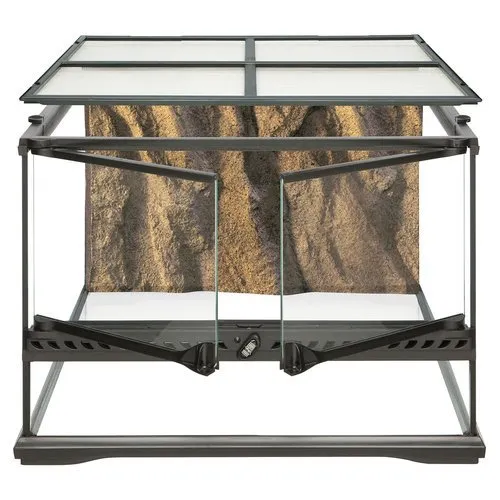
Good ventilation is essential to prevent the buildup of stale air, excess humidity, and the growth of harmful mold and bacteria. Ensure the enclosure has adequate ventilation holes, typically located at the top and sides of the enclosure. The amount of ventilation needed will depend on the species of tarantula and the humidity requirements. Too little ventilation can lead to respiratory problems for the tarantula, while excessive ventilation can dry out the enclosure too quickly. The goal is to find a balance that maintains the correct humidity and temperature while allowing for sufficient airflow.
Regulating Temperature
Tarantulas are ectothermic, meaning they rely on their environment to regulate their body temperature. Maintaining the correct temperature range is crucial for their health and well-being. The ideal temperature range varies depending on the species, but most tarantulas thrive in temperatures between 70°F and 80°F (21°C and 27°C). Use a thermometer to monitor the temperature inside the enclosure. Avoid placing the enclosure in direct sunlight or near a heat source, which can lead to overheating. Make sure to keep the enclosure away from drafty areas as well, as drafts can cause temperature fluctuations.
Heating Options
If your home is consistently below the ideal temperature range, you may need to use a supplemental heating source. A heat mat placed on the side of the enclosure (never underneath) can provide gentle, consistent heat. Avoid using heat lamps, as they can dry out the enclosure and pose a burn risk. Always monitor the temperature carefully when using a heating source. Never use a heat source that is not specifically designed for reptile or invertebrate enclosures.
Lighting Considerations
Tarantulas are primarily nocturnal and do not require special lighting. Excessive lighting can stress them. If you use any lighting, make sure it is low-wattage and does not produce excessive heat. A regular day-night cycle is beneficial, but it is more important to maintain the correct temperature and humidity levels. Avoid direct sunlight, as it can overheat the enclosure. If you are using a light, place it outside the enclosure.
Enclosure Maintenance and Safety
Regular maintenance is essential to keep your tarantula’s enclosure clean and safe. This includes cleaning the enclosure, removing waste, and ensuring the enclosure is escape-proof. Routine maintenance prevents the buildup of bacteria, mold, and other health hazards that can harm your tarantula. Practicing safe handling techniques is also crucial to protect both you and your pet.
Cleaning and Waste Removal
Spot clean the enclosure regularly, removing any uneaten food, shed exoskeletons, and waste. Completely clean the enclosure every few months, or as needed, depending on the species. This includes removing all substrate, cleaning the enclosure with a reptile-safe disinfectant, and replacing the substrate. When cleaning the enclosure, wear gloves and wash your hands thoroughly afterward. Disinfect the water dish regularly, and replace the water daily. Keeping a clean enclosure minimizes the risk of diseases and keeps the tarantula healthy.
Preventing Escapes
Tarantulas are surprisingly adept escape artists, so it is essential to ensure the enclosure is escape-proof. Choose an enclosure with a secure lid that fits snugly. Inspect the enclosure regularly for any gaps or weaknesses. Avoid using enclosures with sliding doors, as these can sometimes be difficult to secure fully. When opening the enclosure for feeding or maintenance, do so carefully and be mindful of the tarantula’s location. Always supervise children or other pets around the enclosure. If your tarantula does escape, remain calm and try to locate it. They often stay near their enclosure.
Safe Handling Practices
While tarantulas are not typically aggressive, they can bite if they feel threatened. Many species also have urticating hairs that can cause skin irritation. Avoid handling your tarantula unless absolutely necessary. If you need to handle your tarantula, do so gently and slowly. Wash your hands thoroughly before and after handling. Be aware of the tarantula’s body language, and avoid handling it if it appears stressed or agitated. It is usually best to observe the tarantula from a distance and to respect its space.
Final Thoughts
Creating the best tarantula enclosure is an ongoing process. By understanding the needs of your specific species, providing the right environment, and practicing good maintenance, you can ensure that your tarantula lives a long and healthy life. Remember to research your tarantula’s specific needs and to adapt your enclosure accordingly. Regularly observe your tarantula’s behavior and adjust the enclosure’s conditions as needed. Your commitment to proper care will result in a happy and thriving pet.
